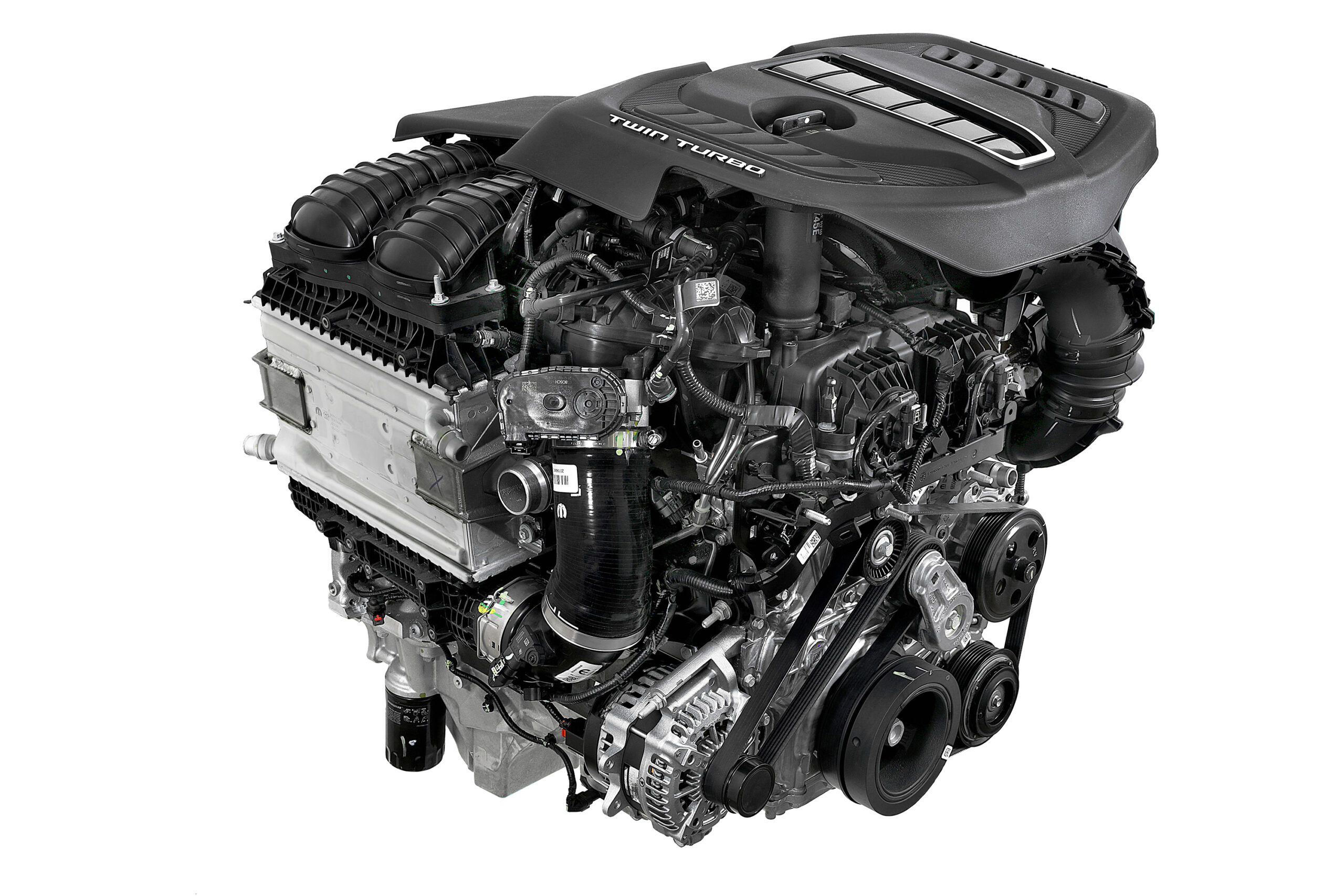Stellantis to Offer New Twin-Turbo I-6 Engine
 Stellantis has revealed a new, 3.0-liter, twin-turbo, inline, six-cylinder engine, named Hurricane.
Stellantis has revealed a new, 3.0-liter, twin-turbo, inline, six-cylinder engine, named Hurricane.
Designed in an I-6 configuration, the Hurricane twin-turbo’s base architecture enables Stellantis propulsion systems engineers to create two distinct variants:
- Standard Output (SO): Optimized for fuel economy, including the use of cooled exhaust gas circulation (EGR), while delivering enhanced power and torque (more than 400 hp/450 lb.-ft. of torque)
- High Output (HO): Optimized for great performance (more than 500 hp/475 lb.-ft.) while maintaining significant fuel economy during heavy use, such as towing
“As Stellantis aims to become the U.S. leader in electrification, with a 50% battery-electric vehicle (BEV) sales mix by 2030, internal combustion engines will play a key role in our portfolio for years to come and we owe it to our customers and the environment to provide the cleanest, most efficient propulsion possible,” said Micky Bly, Stellantis head of propulsion systems. “The Hurricane twin-turbo is a no-compromise engine that delivers better fuel economy and an important reduction in greenhouse gases without asking our customers to give up performance.”
Reducing greenhouse gas emissions is one part of Stellantis’ commitment to cut its carbon footprint by 50% by 2030 and to lead the transportation industry by achieving Net Carbon Zero by 2038, the automaker said.
Specific horsepower and torque ratings will vary based on vehicle, designers said. The first vehicles powered by the Hurricane twin-turbo I-6 reach dealership showrooms this year.
The foundation of the Hurricane twin-turbo is a deep-skirt cast-aluminum block with a structural aluminum alloy oil pan. Cross-bolted steel main bearing caps contain the strong rotating assembly of a forged steel crankshaft and forged steel connecting rods. During manufacturing, the block is deck-plate honed to optimize the cylinder bore shape, which helps improve fuel efficiency, designers said.
Stellantis propulsion system engineers employed a suite of technologies for the Hurricane twin-turbo:
- Two low-inertia, high-flow turbochargers, each feeding three cylinders, for rapid response to throttle inputs
- Plasma Transfer Wire Arc (PTWA) coating in the cylinder bores for an ultra-thin, low-friction wear surface
- High-pressure (5,075 psi/350 bar) direct fuel injection with pumps (single for SO/dual for HO) actuated by a dedicated chain-driven shaft
- Dual overhead camshafts with wide-range, fully independent variable valve timing
- Fuel-saving engine stop-start (ESS) function with robust starter motor for quick restarts
- Engine-mounted water-to-air charge cooler with a dedicated cooling circuit (single inlet for SO/dual inlet for HO)
- Dual water-cooled exhaust manifolds integrated in the cylinder head
- Continuously variable displacement oil pump with integrated scavenge stage tailors pump output to engine demand, reducing frictional losses and helping save fuel
- High-flow ball-valve thermostat minimizes restriction in the cooling system, reducing mechanical losses



